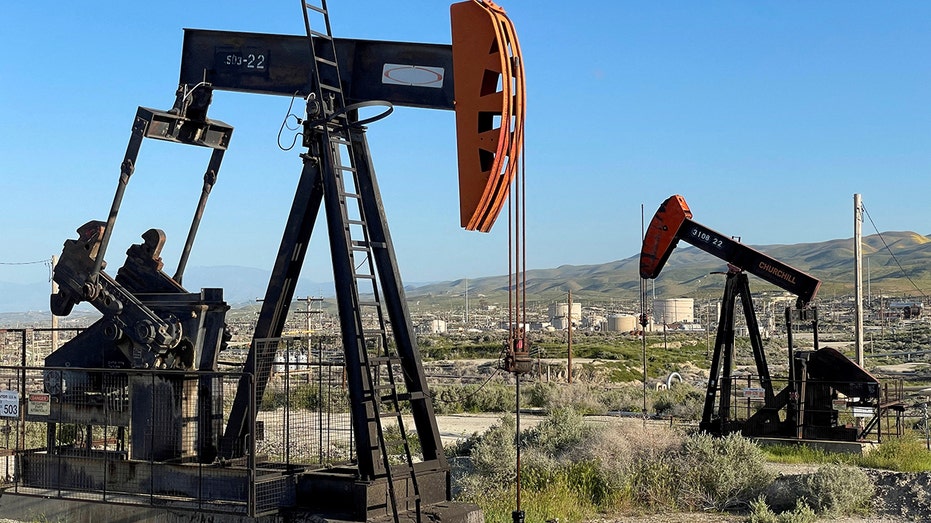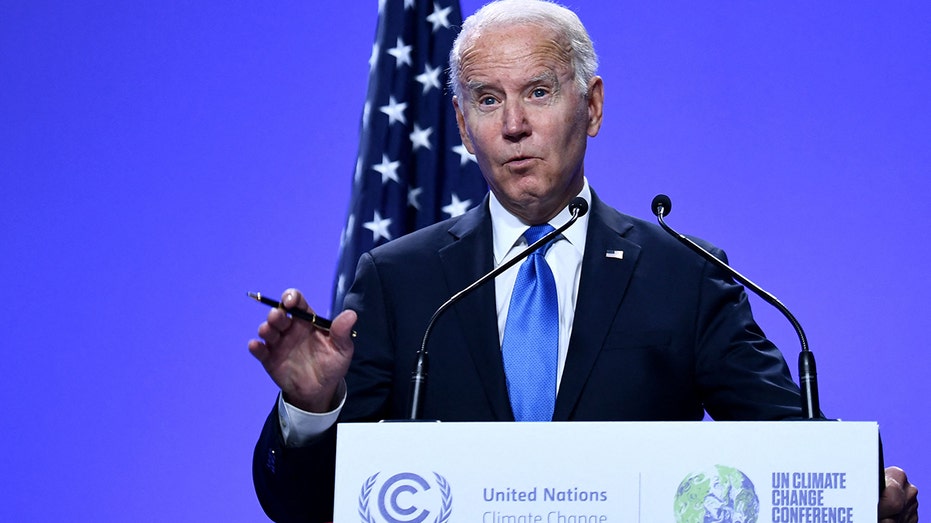New carbon technology projects could be key to 'Big Oil' emissions cuts
Around $304 million has been granted to develop new carbon capture and storage technologies at sites in Kentucky, Texas, Wyoming and Mississippi
Biden is systematically restricting energy investment instead of liberating oil: Alex Epstein
The Moral Case for Fossil Fuels author Alex Epstein discusses whats behind the recent rise in oil prices on Cavuto: Coast to Coast.
The outcome of four government-funded pilot projects could be crucial in developing technologies for Big Oil to reduce its carbon footprint and help the Biden- administration’s goal of a net-zero emissions economy by 2050.
The Energy Department’s Clean Energy Demonstrations (OCED) in February allocated $304 million in taxpayer funds to new technologies designed to capture carbon dioxide emissions at power and industrial sites in Kentucky, Texas, Wyoming and Mississippi. It is part of a larger $12 billion effort via the 2021 infrastructure bill to develop carbon-reducing technology across the U.S.
Should the pilot projects be successful, more than 500,000 metric tons of CO2 emissions could be prevented from being released into the atmosphere each year – an amount equivalent to the combined annual emissions of more than 110,000 gasoline-powered cars, the OCED says.

Oil drilling equipment on federal land near Fellows, California, April 15, 2023. Oil producers are looking to scale up their efforts to reduce carbon emissions and the outcome of four government-funded projects to capture and store the pollutants may (Nichola Groom/File Photo / Reuters Photos)
COMPANIES TOUT ‘NET-ZERO’ CLIMATE TARGETS, BUT FEW HAVE CREDIBLE PLANS, REPORT FINDS
Given that the power and industrial sectors account for roughly half of U.S. carbon emissions, a shift to capture and storage in oil production could see those emissions dramatically slashed.
But the road to embracing carbon capture and storage technology is fraught with challenges given it is expensive and logistically complex. It is also frowned upon by some climate change advocates who want to see coal, oil and gas energy phased out and eventually stopped altogether.
The technology, also known as carbon capture, utilization and storage (CCUS), involves capturing CO2 from the chimneys of an industrial plant using chemical absorption. The captured CO2 is compressed and transported via pipeline, ship, rail or truck to be injected into deep geological formations such as depleted oil and gas reservoirs or saline aquifers, according to the International Energy Agency (IEA).
There are now around 40 commercial capture facilities in operation globally, with over 500 projects in various stages of development.
One of the four government-backed projects is at the International Paper’s mill in Vicksburg, Mississippi, which is at an early development stage.
Amazon is a partner in the project and sources containerboard from the mill for its boxes and packaging. It is teaming up with SLB, an oilfield services giant formerly known as Schlumberger, which is designing and engineering the carbon capture system in collaboration with RTI International, a nonprofit that developed the technology.
EXXON MOBIL SUES ESG INVESTORS TO KEEP CLIMATE PROPOSALS OFF SHAREHOLDER BALLOT

A crude oil pump jack in the Permian Basin in Loving County, Texas on Nov. 22, 2019. The outcome of several carbon capturing and storage projects could be vital in oil producers reducing their carbon footprint. (Angus Mordant//File Photo / Reuters Photos)
Fred Majkut, senior vice president of carbon solutions at SLB, says the goal of the project is to demonstrate that carbon capture and storage is both technologically and economically viable.
"The economic viability of carbon capture and sequestration is a challenge today because the cost of building most plants in order to capture carbon dioxide are very significant," Majkut tells CNBC. It can cost hundreds of millions of dollars to retrofit an industrial plant, he says.
The project at the plant is also a potential way to produce lower carbon products for consumers who are climate change-conscious while it could also help them benefit financially through the sale of carbon credits.
Chevron, Exxon, Baker Hughes and SLB, among others, are now betting that the technology will help slash their emissions, the news outlet reports.
Chevron and Exxon, for instance, are targeting $10 billion and more than $20 billion, respectively, of spending on emissions-reducing technologies that include carbon capture and storage in major projects under development along the Gulf Coast.
They are hoping the new technology can help them scale up their carbon-capturing capabilities.
Late last year, Exxon acquired carbon-dioxide pipeline operator Denbury for $5 billion, giving Exxon more than 900 miles of pipeline stretching through Mississippi, Louisiana and Texas that are located near at least 10 storage sites in the region.

President Biden addresses a press conference at the COP26 UN Climate Change Conference in Glasgow on Nov. 2, 2021. (Brendan Smialowski/AFP / Getty Images)
GET FOX BUSINESS ON THE GO BY CLICKING HERE
Exxon now has more than 1,500 miles of owned and operated CO2 pipeline, which it says is the largest network in the U.S. with the potential to reduce CO2 emissions by more than 100 million metric tons a year, the company said in November after the deal was made.
But the country’s carbon dioxide pipelines still need to grow dramatically to hit the net-zero targets.
The Department of Energy estimates that the current network of 5,200 needs to grow between 30,000 and 90,000 miles but Majkut tells CNBC that the permitting process is challenging because pipelines often cross state lines, requiring lengthy approval from multiple jurisdictions.
"The key is the right geology close by to concentrated emissions," Jeff Gustavson, vice president of lower carbon energies at Chevron, tells CNBC.
"That’s where we see this scaling fastest first, but over time, we will need to build more CO2 infrastructure to be able to transport CO2 much longer distances to access the same storage."





















